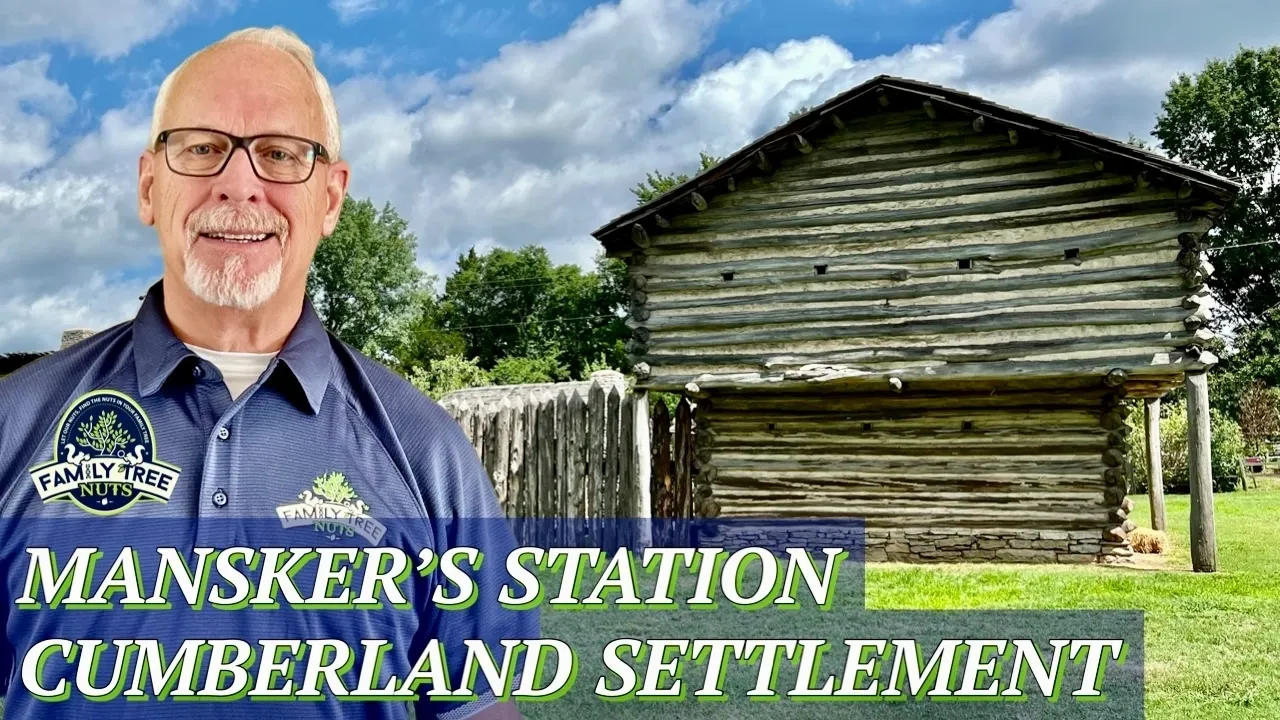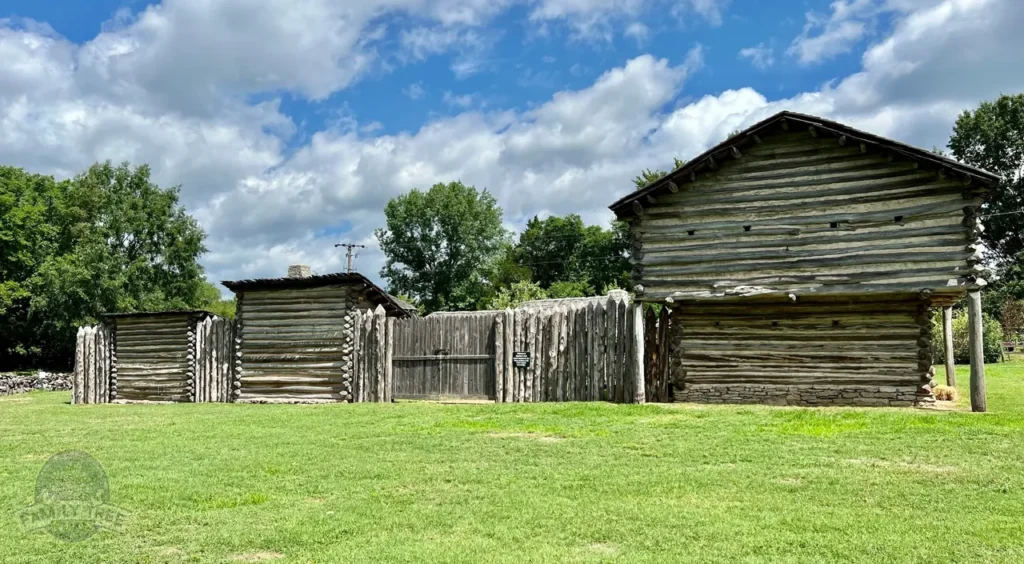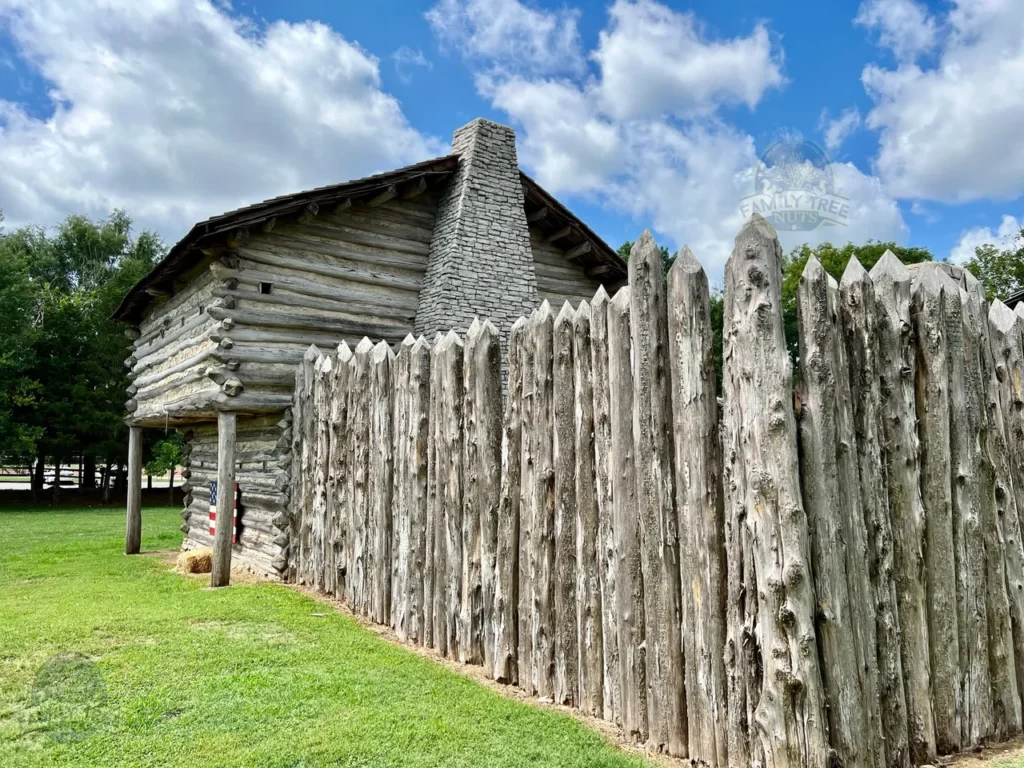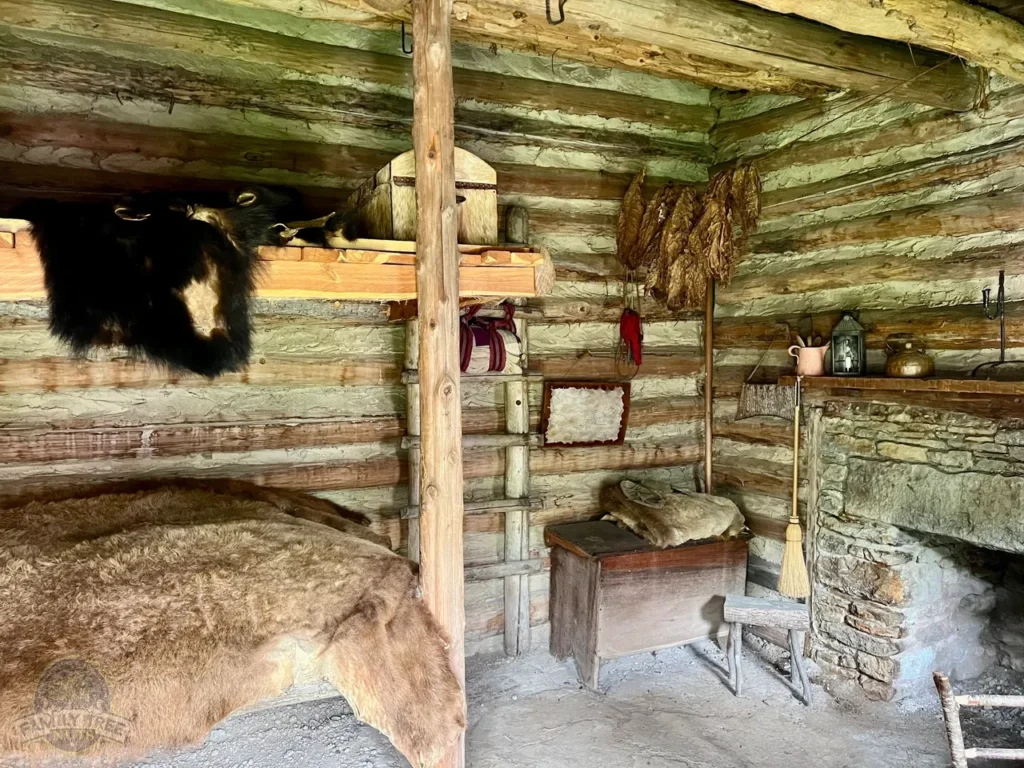
HISTORIC CUMBERLAND SETTLEMENTS OF TENNESSEE & MANSKER’S STATION
They ventured into strange lands to hunt for pelts, were separated from their families for months at a time, endured extreme weather, fought off disease, and even saw family members murdered and kidnapped, but they were determined to make a new life for themselves, and their families in this new land.

Recently we visited the site of Mansker’s Station and I would like to share with you its history as one of the original Cumberland Settlements. In the late 1760s and early 1770s, longhunters began to visit an area around a large salt lick, and close to a river that would later be known as the Cumberland River. They sometimes spent months hunting in the wilderness, they would bring back animal hides for trade and barter. Men such as Timothy Demonbreun, James Robertson, John Donelson, Anthony Bledsoe and Kasper Mansker made numerous trips to the area to hunt for hides in spite of the constant threat of Indian attack. They found the area to have rich soil and to be good for hunting so it wasn’t long before they made plans to return to the area with their families and to settle permanently.
About the same time, in March of 1775, a North Carolina land speculator named Richard Henderson met with Cherokee Indian representatives at Sycamore Shoals, which is in present-day Elizabethton, Tennessee. Henderson agreed to purchase a tract of land consisting of 20 million acres that was located south of the Ohio River, down to the Cumberland River, and over east as far as the Cumberland Plateau. When the agreement was done, they called it the Sycamore Shoals Treaty.
Due to The Proclamation of 1763, there was little chance that the transaction would be recognized by the British Government because that proclamation declared there to be no settlement west of the Appalachians Mountains. Henderson ignored the proclamation and proceeded to form the Transylvania Land Company to manage the settlement of tracts of land in this area. As expected, the British Government along with the colonies of Virginia and North Carolina refused to recognize the agreement reached by the Transylvania Company, but in return for his initiative in the area, awarded Henderson approximately 600,000 acres for future settlement. It wasn’t a total loss and waste of time for him and Henderson was able to pay back his investors and make some profit.

Soon Henderson contracted with well-known longhunters John Donelson and James Robertson to go into the area to survey it for future settlement. In the meantime, a faction of the Cherokees known as the Chickamauga, led by Chief Dragging Canoe opposed all agreements and they were determined to stop the settlers from coming into the area. The Chickamauga proceeded to attack and make war on everyone that came into the area.
The early settlers faced another challenge. In earlier years when Donelson, Robertson and other longhunters entered the area to hunt, they noted the difficulty in getting across the Cumberland Plateau with its steep ridges and almost impassable terrain. The pioneers decided that when it was time for their families to follow and settle permanently, they would come on flat boats down the rivers from Fort Patrick Henry, in present day East Tennessee. They traveled down the Holston River, into the Tennessee River, through to the Ohio River and then into the Cumberland River.
When it was time for families and other settlers to follow, the first flotilla led by Donelson consisted of around 30 flatboats, canoes and dugouts. They left Fort Patrick Henry, in present day Kingsport, Tennessee on December 22, 1779 and arrived at the Big Salt Lick, which is present day Nashville, on April 27, 1779. During the four-month trip Donelson recorded in his diary that they encountered Indian attacks, smallpox, hunger, exhaustion, extreme cold, and swift currents in the treacherous Muscle Shoals.
When the pioneers arrived from their long 1,000-mile journey, their families reunited and proceeded to settle in the area. Today we refer to them as the first Cumberland Settlers. The threat of Indian attack was very real, which caused them to plan for several “stations” or forts to be built in the area to provide security for the locals. The first pioneers’ farms were usually being located on land adjacent to the fort.
The most prominent stations in the area were known as Nashborough Station, Mansker’s Station, Bledsoe’s Station and Kilgore’s Station and as time went by the communities of settlers continued to grow around each. In light of the fact that these new stations were outside of the area controlled by the British or Colonial Government, they drew up their own guide for land transactions and simple governance. The new document was called the Cumberland Compact and signed in 1780, by 250 men in the area including, Kasper Mansker whose settlement we visited.

Kasper Mansker, a veteran of the American Revolution and also one of the early longhunters that explored the area, returned to lay claim to 640 acres that was awarded to him for his service to the country during the revolution. He was one of the signers of the Cumberland Compact, and built his station for the settlers about twelve miles north of Nashborough. The first fort was burned by the native tribes, so a larger and more fortified structure was built on the opposite side of the creek.
Today there is a reproduction of the Mansker Station Fort and it is a good representation of what life was like on the frontier in the late 1700’s. When the fort was built, it was surrounded the local farms in the area, and it was essential for providing protection, and a central location for the community. It was also the center for the bartering, exchange of goods and services, a community meeting place, a tavern and inn for travelers passing through the area, and usually included a blacksmith’s shop where tools were made.
Once established, the stations became landmarks for local roads and trails and identifiable for overnight stops. Over time the Indian attacks ended, and new communities began to spread out across the region, which caused the stations became less and less necessary for the defense of the local population.At Fort Nashborough, Mansker’s, Bledsoe’s and Kilgore’s Station the foundations were laid for communities that would become known today as Nashville, Tennessee, and its suburbs, which is now home to almost two million people.
At Mansker’s Station we remember and honor those that came before us, endured death, disease and hardships in order to make their way in the world for their families. Our ancestors would soon follow and settle here and all across America. Their stories are waiting for you to discover; all you have to do is start looking, it’s out there. That is our passion at Family Tree Nuts, to record our American history and hopefully motivate others like you to discover your own unique family history. It is important to learn where we came from, and share it with our children, as we look forward to the future. Be sure to see the video below from here.
-Scott Denney, Historian, Family Tree Nuts
